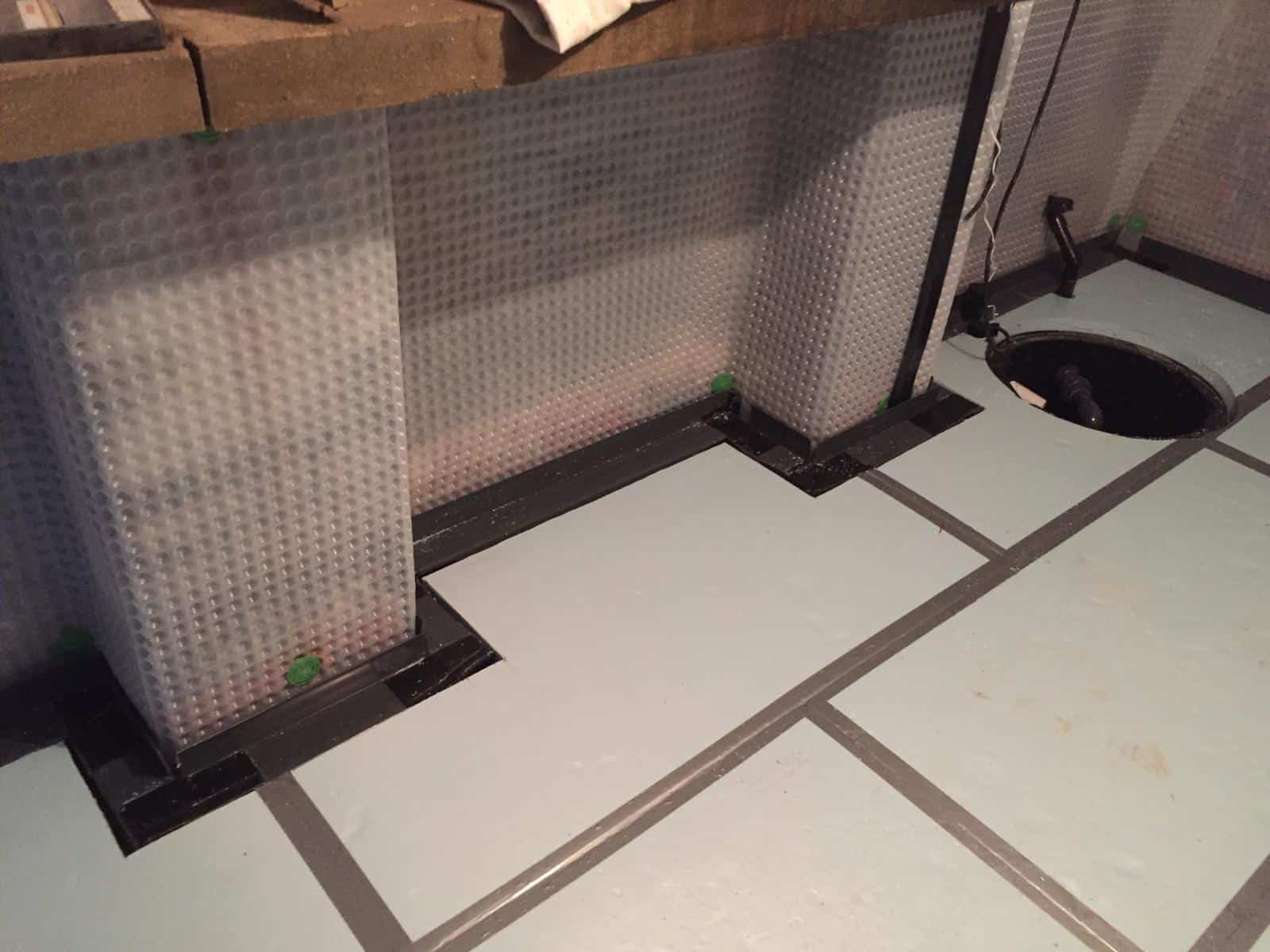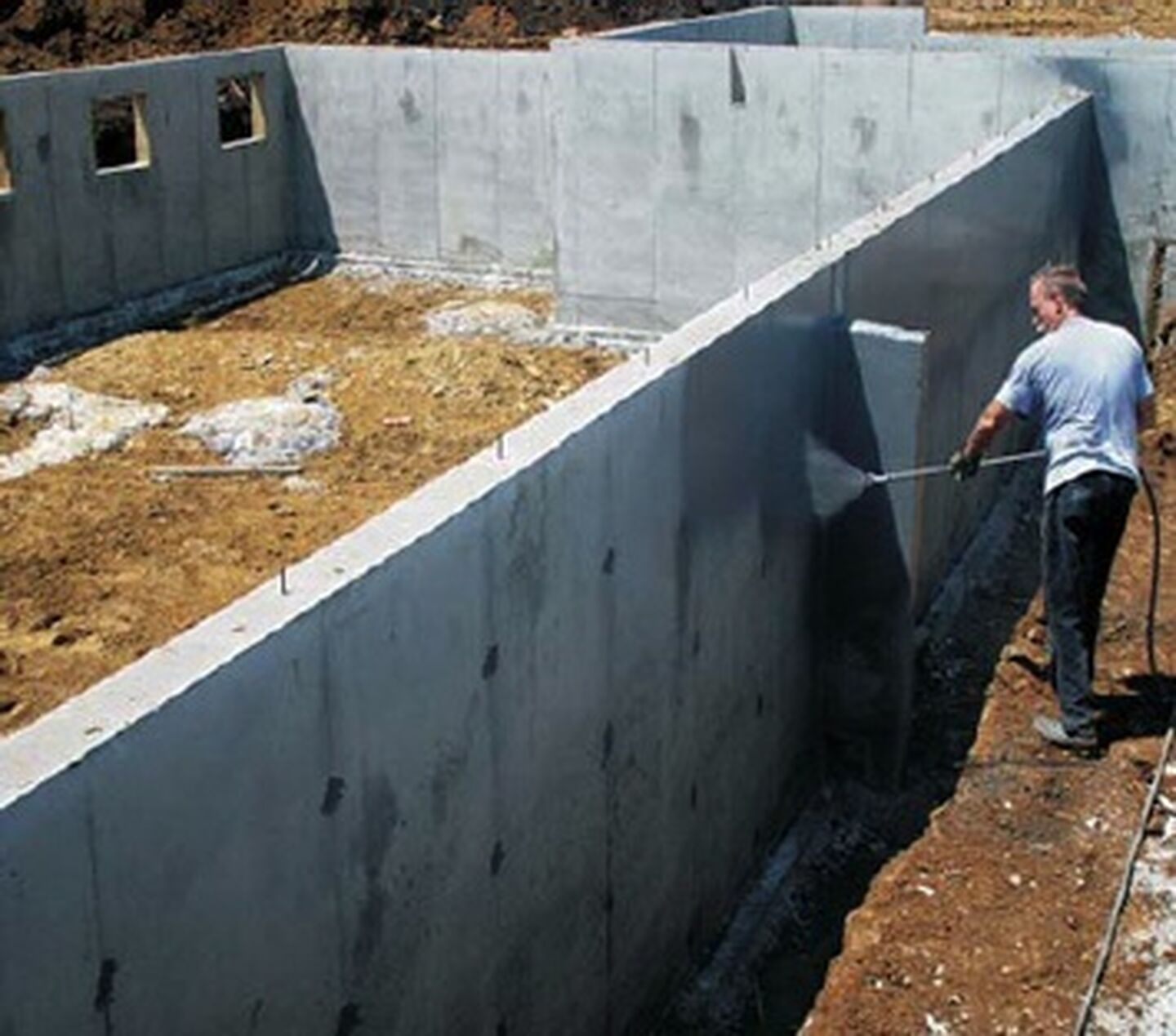Checking Out the Different Strategies and Solutions for Effective Damp Proofing
Dampness in buildings postures significant challenges to both structural stability and interior air quality. Different methods and remedies have emerged to combat this prevalent concern. From conventional damp-proof membranes to ingenious chemical therapies, each technique supplies unique benefits. Comprehending these options is necessary for reliable moisture control. Picking the best service depends on certain building conditions and demands, motivating more expedition into the most efficient moist proofing techniques offered.
Comprehending the Reasons For Dampness
Although dampness can emerge from various sources, understanding these reasons is crucial for efficient removal. Frequently, moisture originates from three key resources: rising wet, passing through moist, and condensation. Rising wet occurs when groundwater travels up-wards with porous products, such as brick or rock, commonly because of an absence of an efficient obstacle (damp removal newcastle). Permeating wet is typically brought on by external variables, consisting of roofing system leakages, defective seamless gutters, or damaged wall surfaces, allowing water to penetrate a residential property. Condensation, on the various other hand, arises from excess wetness in the air, typically exacerbated by bad ventilation and temperature level differences, resulting in water beads forming on surfaces. Determining these underlying issues is important, as each kind of dampness needs a tailored technique for removal. Correct assessment helps in determining one of the most efficient options, eventually protecting the structural integrity of a structure and boosting interior air top quality
Standard Damp-Proof Membranes

Chemical Damp-Proofing Solutions
Chemical damp-proofing options offer an ingenious strategy to avoid wetness breach in buildings. These techniques generally entail the application of fluid chemicals that penetrate stonework and create an obstacle against rising wet. Frequently used chemicals consist of silanes, siloxanes, and other water-repellent agents that respond with surface materials to develop a hydrophobic layer.The application procedure typically calls for boring openings right into the wall surfaces, injecting the chemical option, and permitting it to cure. This technique is especially beneficial for older structures where traditional damp-proof membrane layers might be impractical. Chemical damp-proofing can be less disruptive and more affordable than comprehensive restoration projects.While efficient, these options depend on appropriate application and ecological conditions for peak efficiency. damp proofing newcastle. Regular maintenance and monitoring are necessary to ensure the durability of the damp-proofing therapy. Overall, chemical damp-proofing stands for a functional alternative for securing buildings against moisture-related damages
Dental Caries Wall Surface Building Methods
Dental caries wall surface construction techniques supply countless benefits, particularly in dampness control and power efficiency. By including an air void between 2 layers of masonry, these wall surfaces properly alleviate water ingress while boosting insulation. This combination not only shields structures from moisture but also adds to reduced energy consumption.
Advantages of Tooth Cavity Walls
When considering effective wet proofing methods, the benefits of tooth cavity wall surfaces attract attention plainly. Cavity walls are composed of 2 separate layers, creating an air gap that effectively reduces moisture infiltration. This layout reduces the risk of dampness, as the outer wall serves as an obstacle versus rain and water ingress. Additionally, cavity walls boost thermal insulation, which contributes to energy performance by lowering heat loss. They also offer audio insulation, aiding to create a quieter indoor setting. In addition, the air gap allows for air flow, which helps in moisture control and lowers the chance of mold and mildew development. These advantages not only enhance the overall convenience of a building however additionally add to its long life and architectural stability.
Moisture Control Strategies
Effective dampness control approaches are important in cavity wall building to ensure lasting security against moisture. One main technique includes the incorporation of weep openings, which promote water drain from the tooth cavity, preventing buildup. Furthermore, the usage of breathable membrane layers can help manage dampness levels while enabling trapped vapor to escape. Proper placement of insulation is additionally critical, as it needs to not block drain courses. Furthermore, guaranteeing that the outer fallen leaves of the cavity wall surface are constructed with water-resistant materials improves total sturdiness. Normal maintenance checks are vital to recognize any type of obstructions or damage early, safeguarding the framework's stability. Eventually, a mix of these strategies forms a durable defense versus dampness invasion in dental caries wall surfaces.
Insulation and Energy Effectiveness
Insulation plays a crucial duty in enhancing energy efficiency within cavity wall building. By integrating insulating materials, these wall surfaces develop a thermal obstacle that lessens heat loss and reduces power usage. Reliable insulation not just helps keep a stable interior temperature but likewise reduces the risk of wetness, as it avoids condensation within the wall surface tooth cavity. Different methods, such as making use of stiff foam boards or mineral wool, can be employed to accomplish ideal insulation efficiency. Additionally, appropriate setup is vital to guarantee that voids and gaps are reduced, which can otherwise jeopardize energy effectiveness. Inevitably, a well-insulated tooth cavity wall surface contributes considerably to general sustainability and reduces cooling and heating prices for home owners.
Outside Damp Proofing Approaches
Exterior wet proofing methods are crucial for shielding structures from wetness seepage. 2 effective methods include the application of water-proof membranes and the setup of French drains. These options help minimize water buildup and preserve the integrity of buildings.
Waterproof Membrane Layer Application
While different methods exist for preventing moisture access, the application of water-proof membrane layers stays a highly reliable external wet proofing strategy. These membranes are commonly made from materials such as polyethylene, rubber, or modified bitumen, giving a durable barrier against water penetration. The setup process involves using the membrane to the exterior surfaces of wall surfaces or foundations, making sure total insurance coverage to stop leakages. Proper adhesion and sealing at joints are critical to making best use of efficiency. Water-proof membrane layers can be used in different kinds, consisting of liquid coatings and sheet membranes, allowing for adaptability based upon the specific demands of the structure. This approach not just secures buildings from wetness yet additionally improves their durability and architectural integrity.
French Drain Setup
One effective approach for handling groundwater and avoiding moisture accumulation around a structure's structure is the setup of a French drainpipe. This drainage system website consists of a trench full of crushed rock and a perforated pipe that reroutes surface area water away from the foundation. Appropriate installment requires careful planning, making sure that the drainpipe inclines far from the framework to assist in excellent water circulation. Furthermore, the area of the drain is important; it must be placed in areas vulnerable to pooling or excess dampness. Regular upkeep, consisting of cleaning particles from the gravel and guaranteeing the pipe remains unobstructed, is necessary for long-term effectiveness. Inevitably, a well-installed French drain can considerably lower the danger of water-related issues in cellars and foundations.
Interior Waterproofing Methods
Interior waterproofing approaches are crucial for protecting a building's inside from dampness seepage and possible water damage. These methods usually entail the application of specialized materials and methods designed to develop a moisture barrier within the structure. One usual strategy is the usage of water resistant layers or sealers on walls and floorings, which stop dampness from permeating surfaces.Additionally, mounting interior water drainage systems, such as sump pumps, can efficiently handle water buildup in cellars and crawl rooms. An additional technique involves the use of vapor barriers, which are mounted to hinder wetness motion from the ground into living spaces.Moreover, dealing with any type of cracks or gaps in walls or structures with ideal sealants assures a detailed protection versus water invasion. By executing these interior waterproofing techniques, building proprietors can considerably minimize the danger of mold growth, structural damage, and various other moisture-related issues. Appropriate execution of these techniques is vital for lasting defense and building stability.
Regular Upkeep and Assessment Practices
Routine maintenance and assessment practices are crucial for guaranteeing the lasting performance of moist proofing solutions in any kind of building. Regular checks make it possible for residential or commercial property owners to identify very early indications of wetness breach, such as peeling off paint, mold and mildew development, and stuffy odors. These indicators can indicate underlying problems that call for immediate attention.Inspections need to be performed a minimum of annually, concentrating on prone areas like cellars, creep areas, and outside walls. Throughout these assessments, homeowner should take a look at sealers, drainage systems, and air flow to verify they operate correctly.Additionally, maintaining gutters and downspouts is necessary, as stopped up systems can result in water build-up near the structure. Implementing a normal maintenance schedule, together with prompt repair work, can substantially expand the lifespan of moist proofing actions and secure the structural stability of the structure. Aggressive measures eventually add to the overall health and wellness of the living environment.
Frequently Asked Inquiries
Exactly How Lengthy Does Damp Proofing Typically Last?
The period of wet proofing performance differs, generally lasting between 20 to 50 years. Elements such as application top quality, environmental problems, and upkeep techniques considerably influence the longevity of the moist proofing treatment.

Can I Damp Evidence My Home Myself?
The individual contemplated the feasibility of do it yourself damp proofing. With correct study and the appropriate products, it is feasible. They additionally acknowledged the value of professional guidance to assure durable efficiency and prevent future concerns.
What Are the Indicators of Inefficient Damp Proofing?
Indications of inefficient moist proofing include relentless mildewy odors, noticeable mold and mildew development, peeling off paint, damp patches on wall surfaces, and timber decay - mould treatment newcastle. Homeowners must address these problems immediately to avoid additional damage and wellness problems
Does Damp Proofing Affect Indoor Air High Quality?

Just How Much Does Expert Damp Proofing Price?
Professional wet proofing costs differ considerably, generally varying from $1,000 to $5,000 depending on the home's size, the extent of the damp concern, and selected techniques. Each scenario requires a customized analysis for precise rates. Generally, dampness originates from 3 key resources: rising moist, permeating wet, and condensation. When considering efficient moist proofing approaches, the advantages of tooth cavity wall surfaces stand out plainly. Exterior wet proofing methods are necessary for protecting structures from moisture infiltration. While different techniques exist for preventing wetness access, the application of water resistant membranes continues to be a very efficient exterior moist proofing method. Indicators of inadequate wet proofing include consistent mildewy odors, visible mold growth, peeling off paint, wet spots on wall surfaces, and timber decay.